Performance Comparison 6 and Google Nexus Samsung Galaxy Note 4
3
Hardware Smartphones
view 554
� �
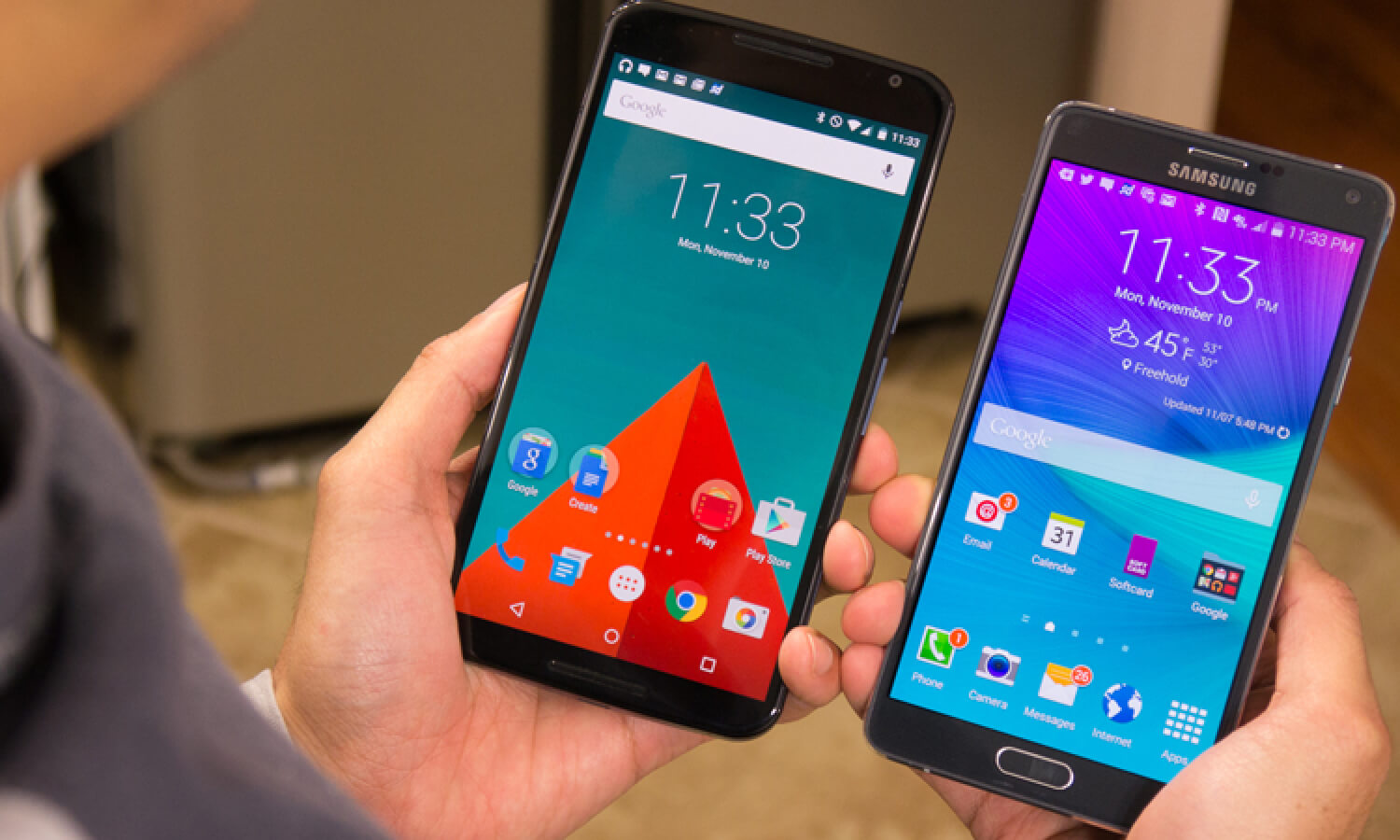
All current flagship device, usually equipped with top solutions component manufacturers; No exception, and processors. On the market today there are two main giant: it Qualcomm and Mediatek. Qualcomm back from the United States, while Mediatek is headquartered in Taiwan. In fact, these are two completely different markets: Mediatek is mainly used in the Asian markets, while Qualcomm popular with Western markets. However, it’s not about the rivalry between the two companies, today I would like to compare Note 4 and Nexus 6, which are equipped with identical processors. Who is more powerful? Let’s deal.
Both Phablet are based on Qualcomm Snapdragon processor 805, which today is one of the best solutions among issued on market devices. It is worth noting that the Snapdragon 805 – this is the last 32-bit processor company, because all subsequent announcements already touched 64-bit solutions, and it is quite logical. Therefore, we can say with certainty that the Snapdragon 805 – is the most powerful 32-bit processor in the world.
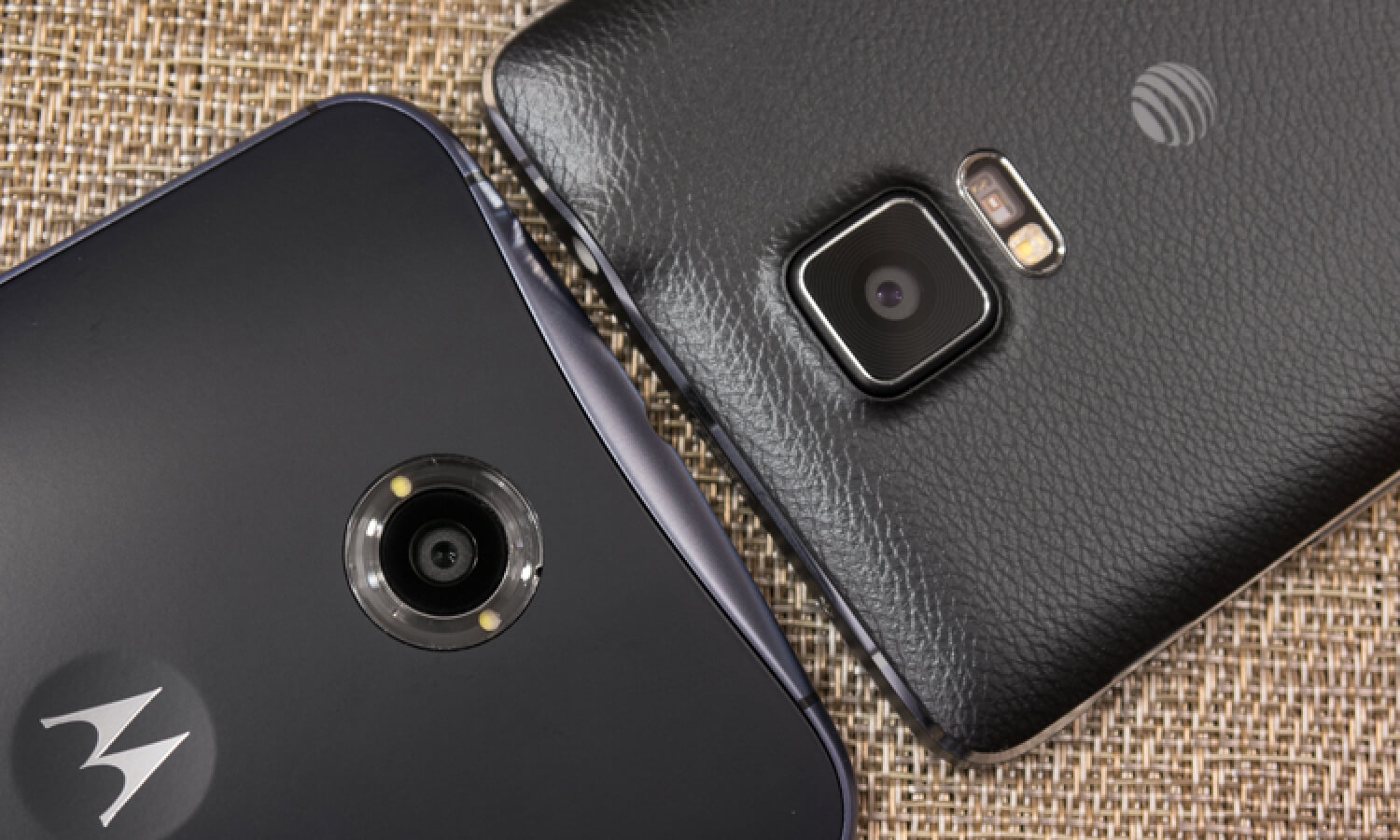
Snapdragon 805 has 4 core Krait 450, which is an improved version Krait 400, which were used in Snapdragon 800 two years ago. The last major leap in performance was way smartphones Snapdragon is 800, which is installed in devices such as the Galaxy Note 3, Nexus 5, Sony Xperia Z1, LG G2. It was really noticeable jump in the future, users expect to see a similar jump in the already new generation of devices, but no. Next in line was the Snapdragon processor 801, who worked on the new version of the core Krait 400, but with a slightly increased frequencies from 1.7 GHz to 2.3 GHz, and the cause of this increase in frequency was that if the past generation Krait 400 worked on 28-nanometer process technology with low consumption, now have the kernel has the same 28-nanometer process technology, but with high performance. However, in the Qualcomm Snapdragon 810 decided to abandon the use of improved versions of the kernel in favor of Cortex A57 / Cortex A53. During a performan ce comparison, in addition to Note 4 and Nexus 6, we compare them with previous solutions based on Krait 400.
We start our comparison with Geekbench:

As you can see from the chart, our devices are almost equal, showing 1100 points. Our comrades of the phonearena decided to compare the performance with LG G2, which shows in the same test 930 points, comparing the results, we get exactly 18 percent performance boost. It took 2 years – productivity increased by only 18%, is not impressive.
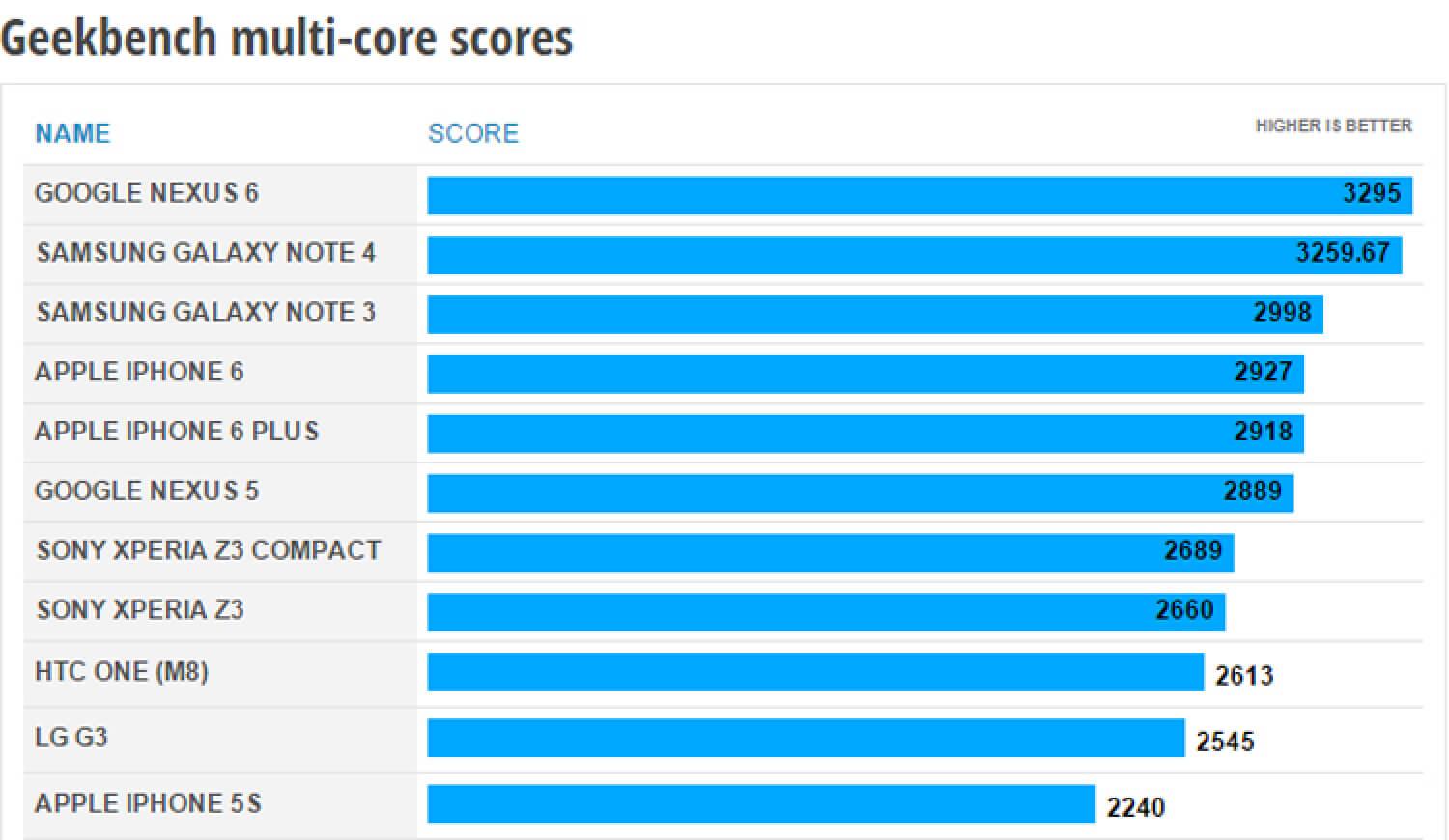
In the multi-core test Soup also show almost similar rates (3270), and the difference with G2 (2750) is 19%, which is quite logical. However, in the same test LG G3 shows the result of a fairly low – only 2,545 points, blame QHD-resolution or more demanding shell is unclear.
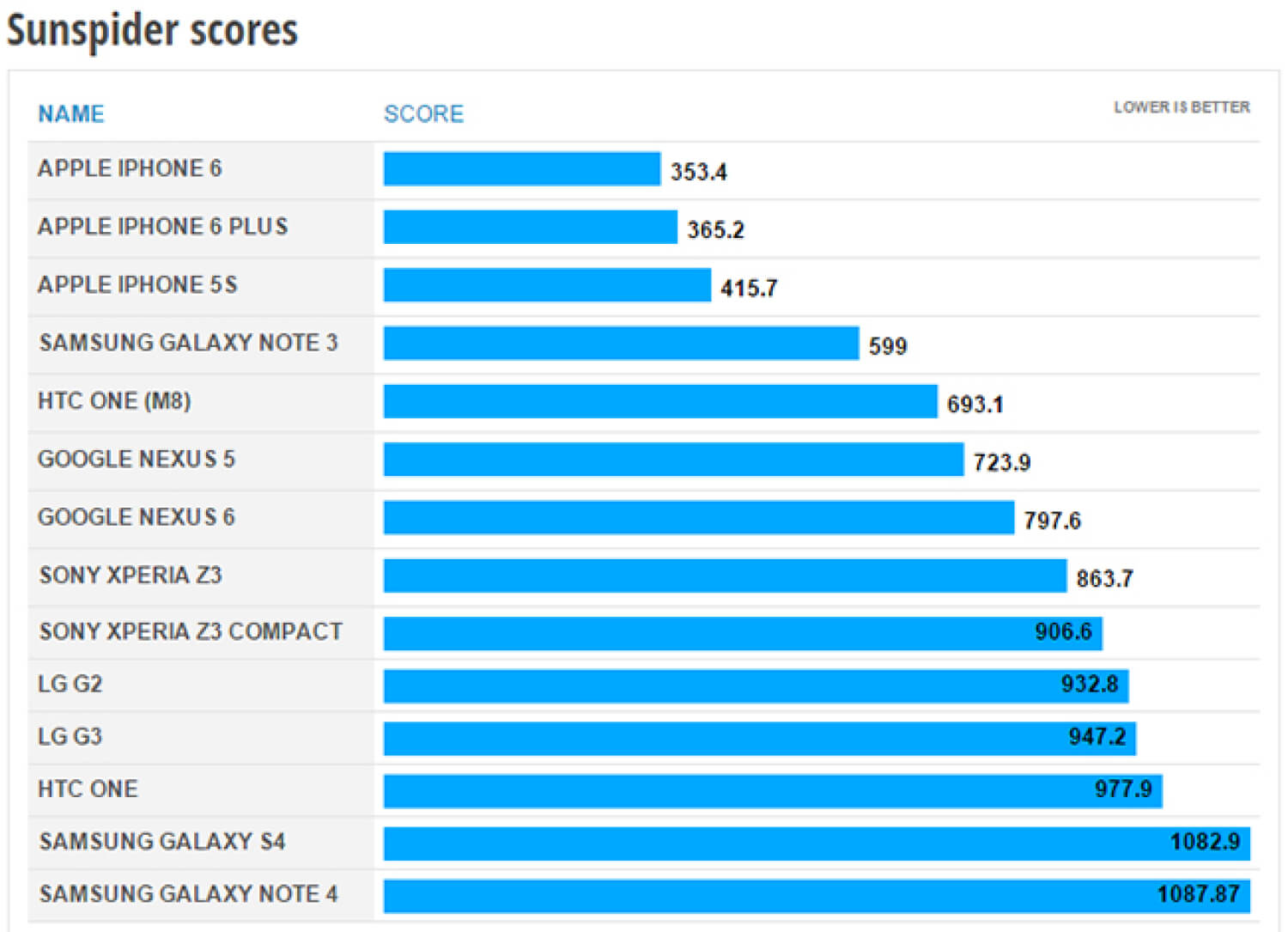
As for the speed of Java-script, we will use Sunspider, which received Soup quite controversial results: if a Nexus 6 everything is clear, the Note 4 shows a modest 1,087 milliseconds when using the browser Chrome, but if use a standard browser, Note 4 shows already 380 ms, so you can not believe the results clearly Sunspider. If you look at the results in other tests, the difference between Chrome browser and the drain Note 4 is minimal.
Let us, perhaps, to compare video cards. Together with the entry of 600 Snapdragon many had a chance to get acquainted with the Adreno 320, 800 in the Snapdragon Adreno 330 we met, and in 805 Snapdragon – Adreno 420. The main advantages of Adreno 420 are: increase in frequency from 578 MHz to 600 MHz (5 %), and increased to 166.5 GFLOPS with Adreno 330 to 172.8 in the Adreno 420. Also important feature Andreno 420 was to support OpenGL ES version 3.1, whereas previous versions support only 3.0.
An important criterion when comparing the performance of such devices is the screen resolution, it is both QHD. Therefore, the test is not entirely objective in comparison with other competitors, having a FullHD-display.
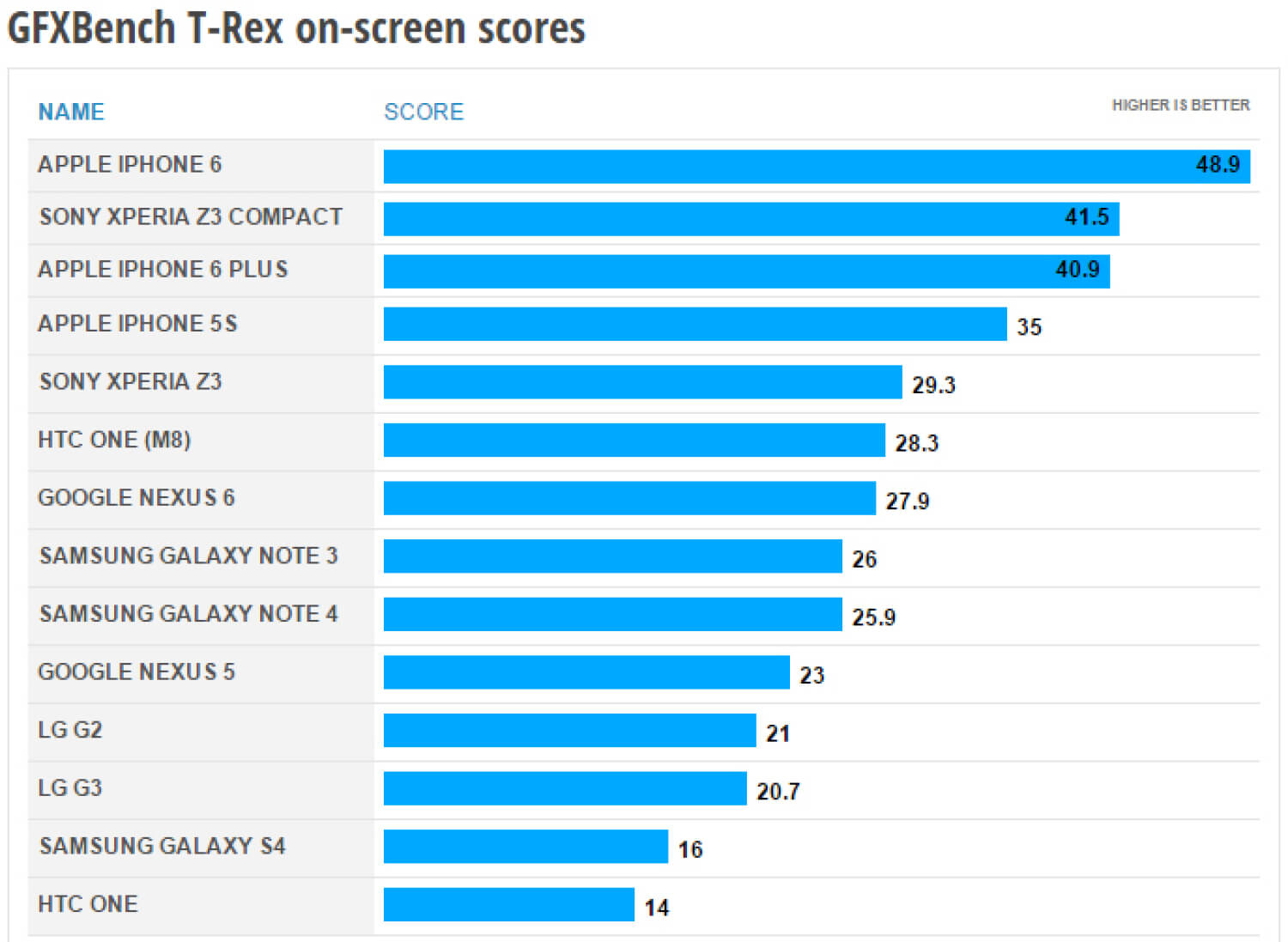
Performance smartphones in GFXBench T-Rex are very similar, Note 4 shows 25.9 fps while the Nexus 6 27.9 frames per second. The difference in frame 2 is possible due to the lower density of pixels, large size Nexus 6 and, as a result, greater heat dissipation.
In GFXBench Manhattan we conducted two tests: with the on and off screen. The first performance of smartphones are identical, and this is an average of 11.5 points.

In the test with the screen we see an interesting situation: the device ahead of iPhone 6 and all other smartphones and took the first two lines, that’s what it means QHD-display when evaluating the performance of a video card: 18.8 and 18.5 frames, while the M8 – 11,8 frames per second, the difference is obvious.
In summary, it can be said that Qualcomm has enough resources for further development: it’s 64-bit processors, and this 20-nanometer process technology, and Android 5.0 with support for 64-bit.


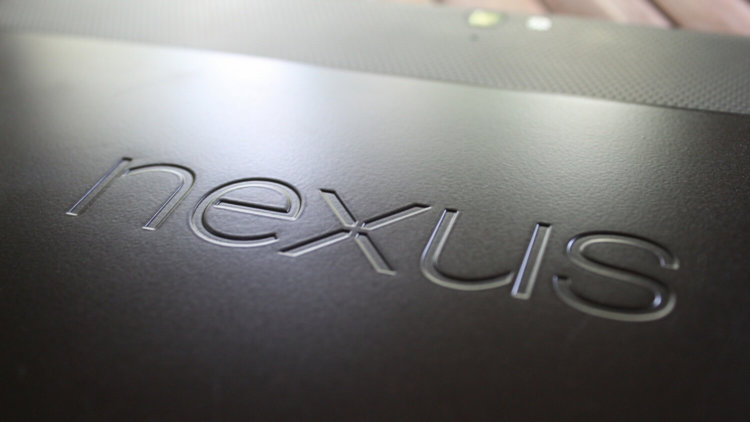
No comments:
Post a Comment